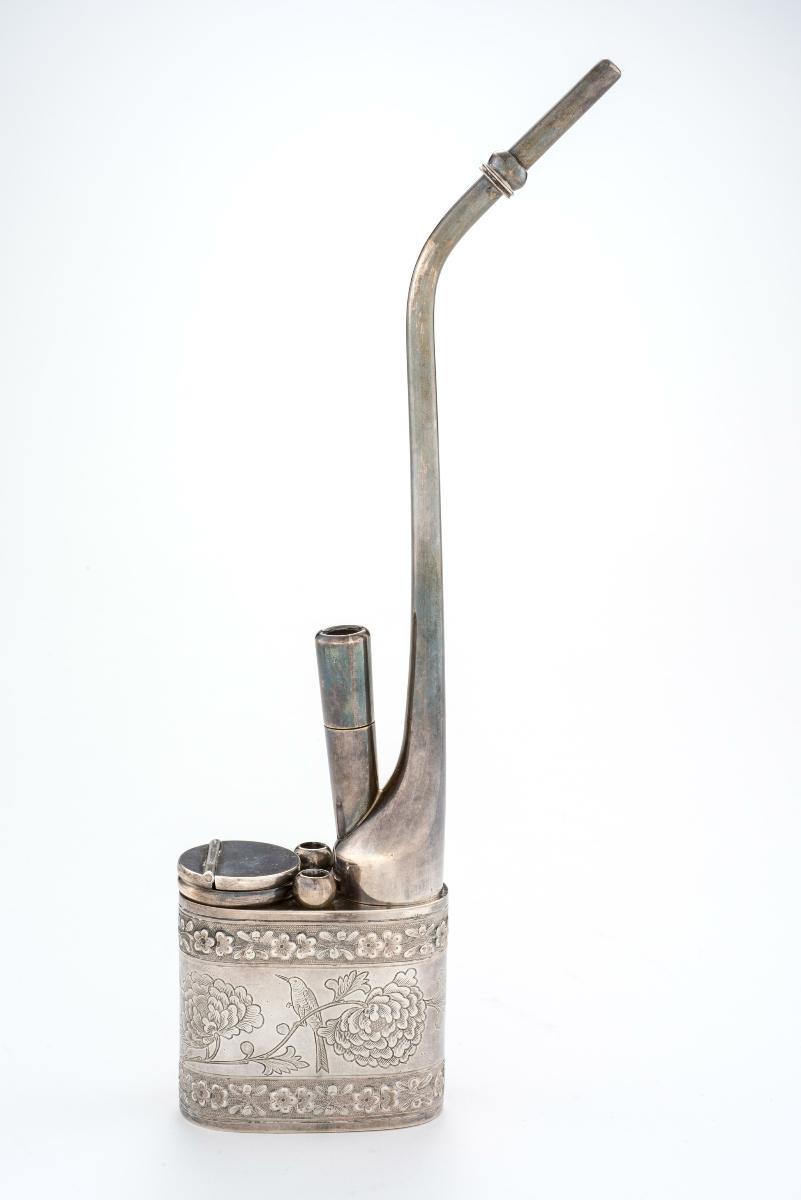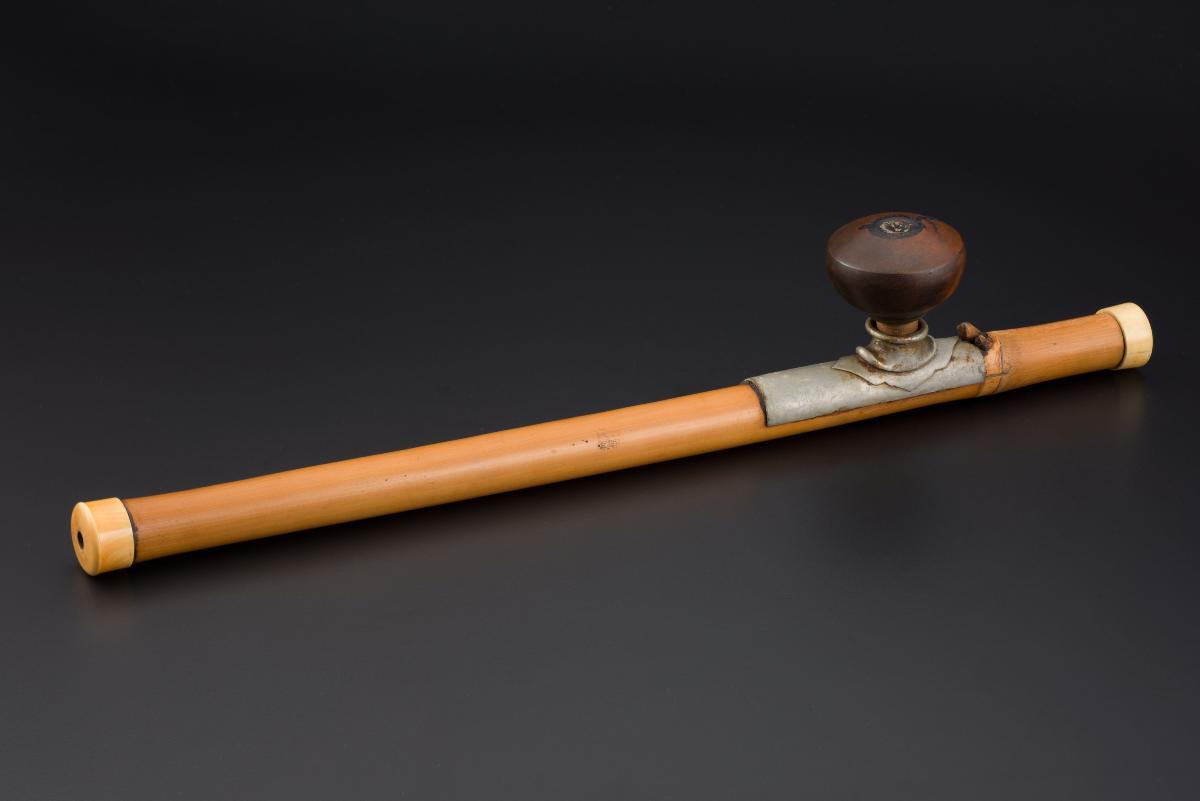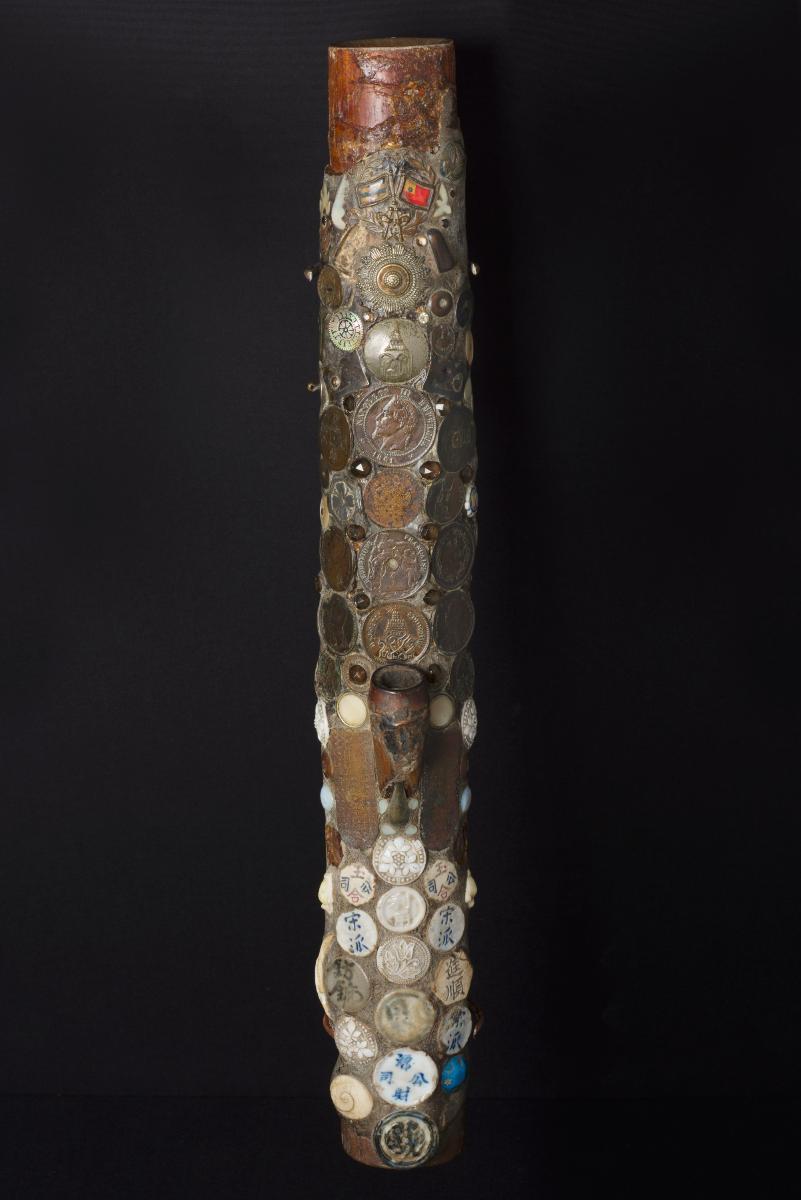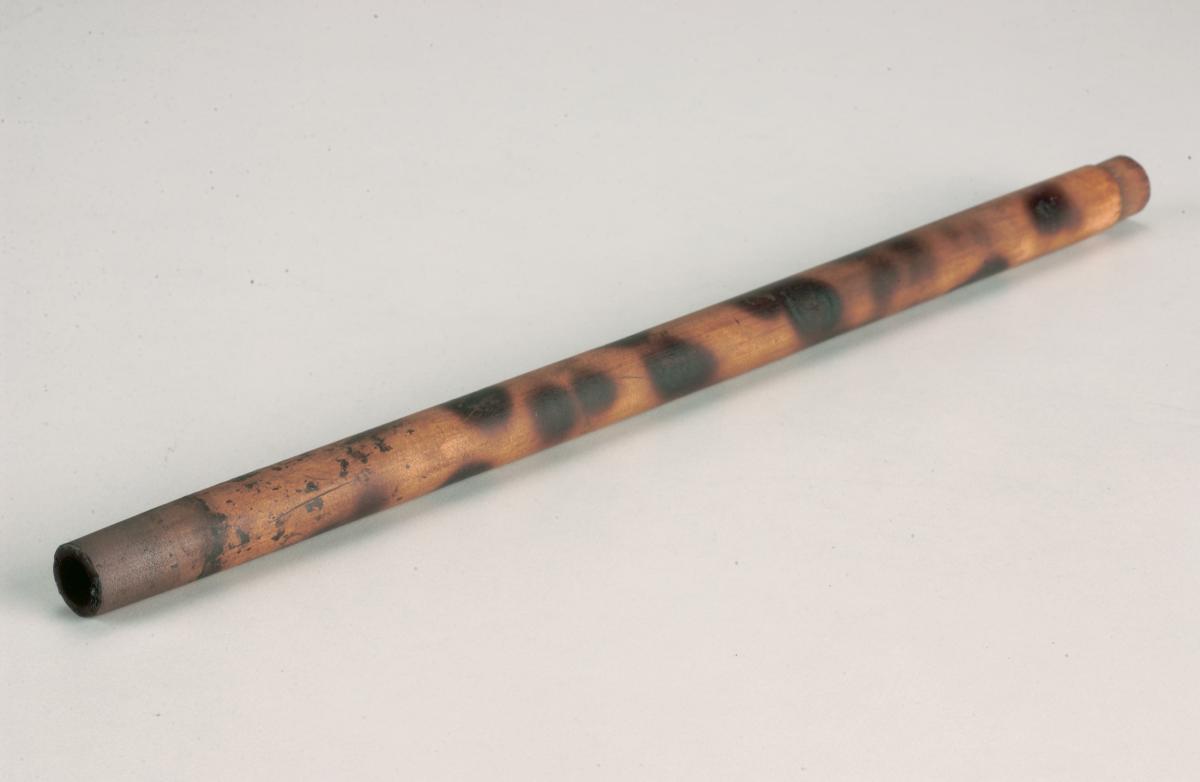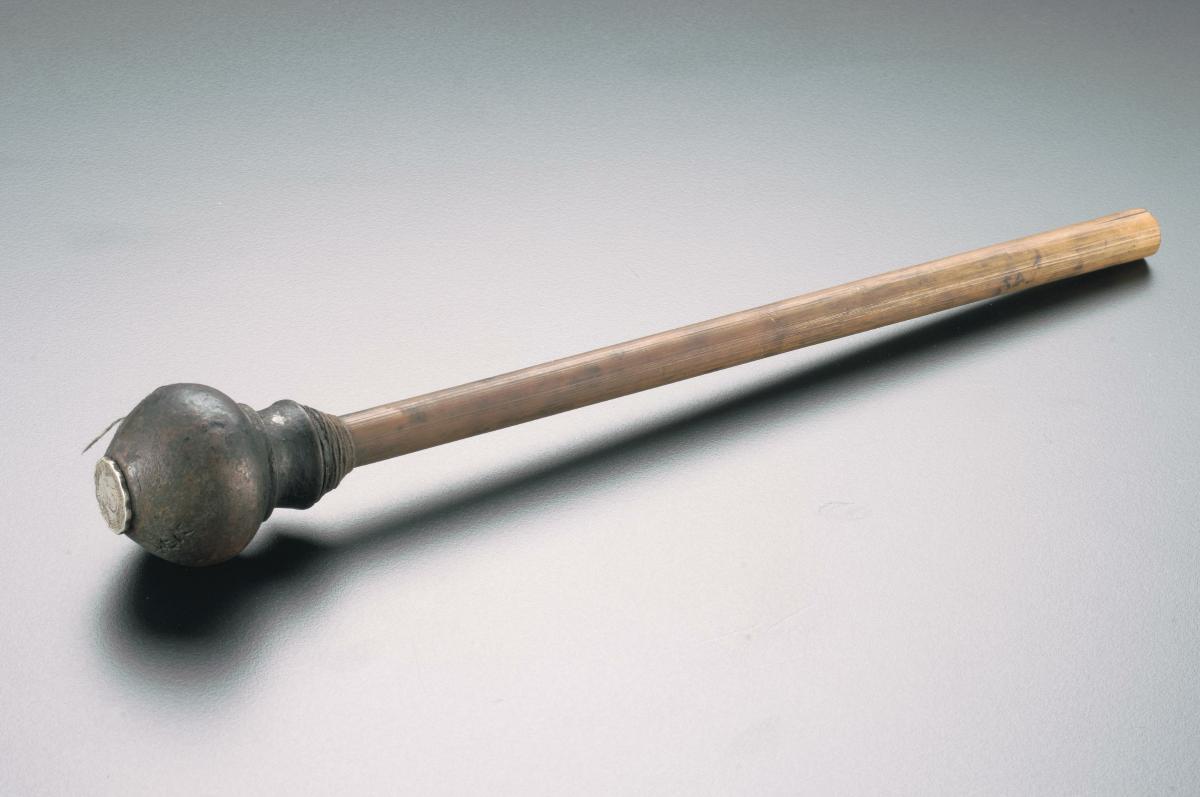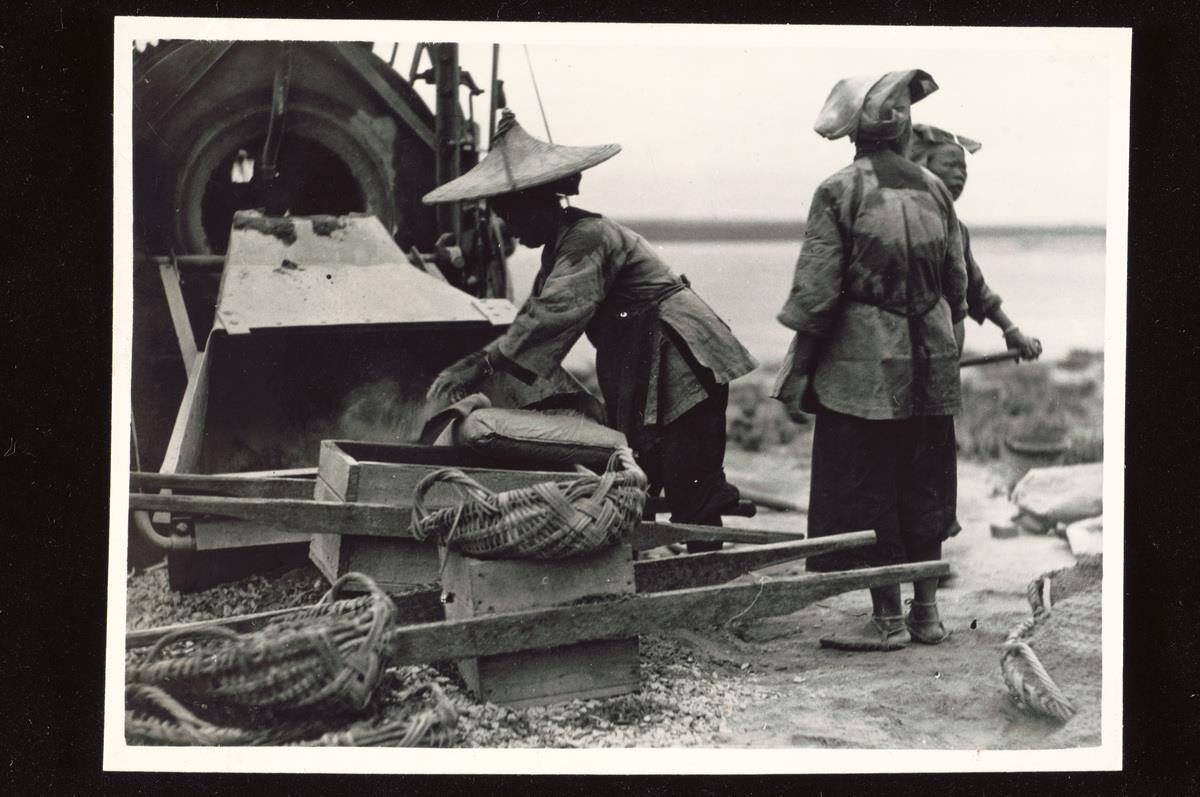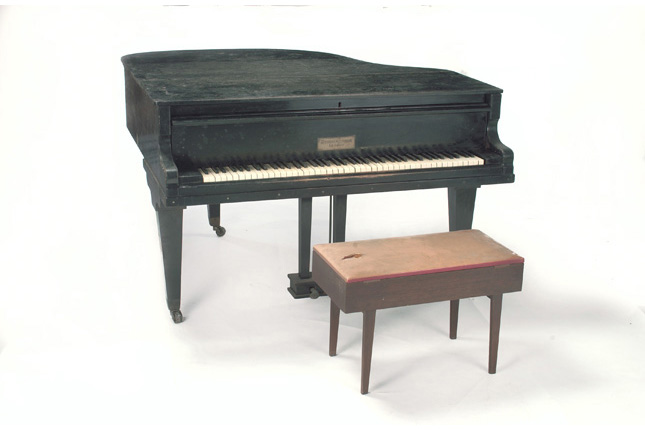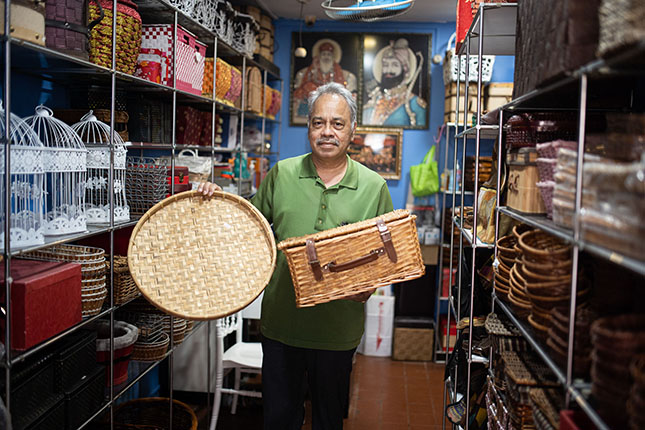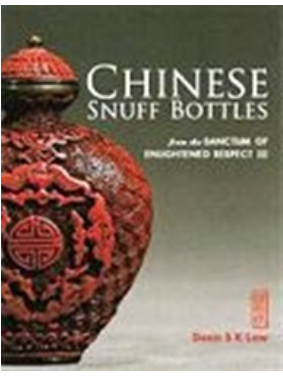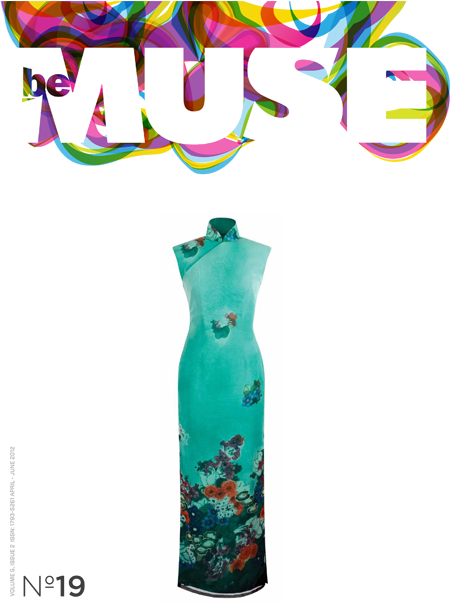This opium pipe is decorated on one side with a magpie seated on a peony branch. The characters 延年 (yan nian, meaning “extending life”) decorate the reverse. The characters are distorted, as if seen through a smoky haze, a common conceit on tobacco and opium pipes. Flanking the designs are floral bands. The underside of the removable mouthpiece is stamped with several marks, including 慶雲 (Qing Yun, probably after a silver firm in Shanghai active in the 19th century).Opium was first imported into China by the British, in an attempt to reduce the trade imbalance caused by British demand for Chinese tea, silk, and porcelain. This resulted in the widespread recreational use of opium throughout China. From rickshaw pullers to emperors, devotees of the narcotic numbered in the millions. Opium smoking paraphernalia reflected the economic status of the smoker. Less privileged consumers used wood, bamboo, or clay pipes.




